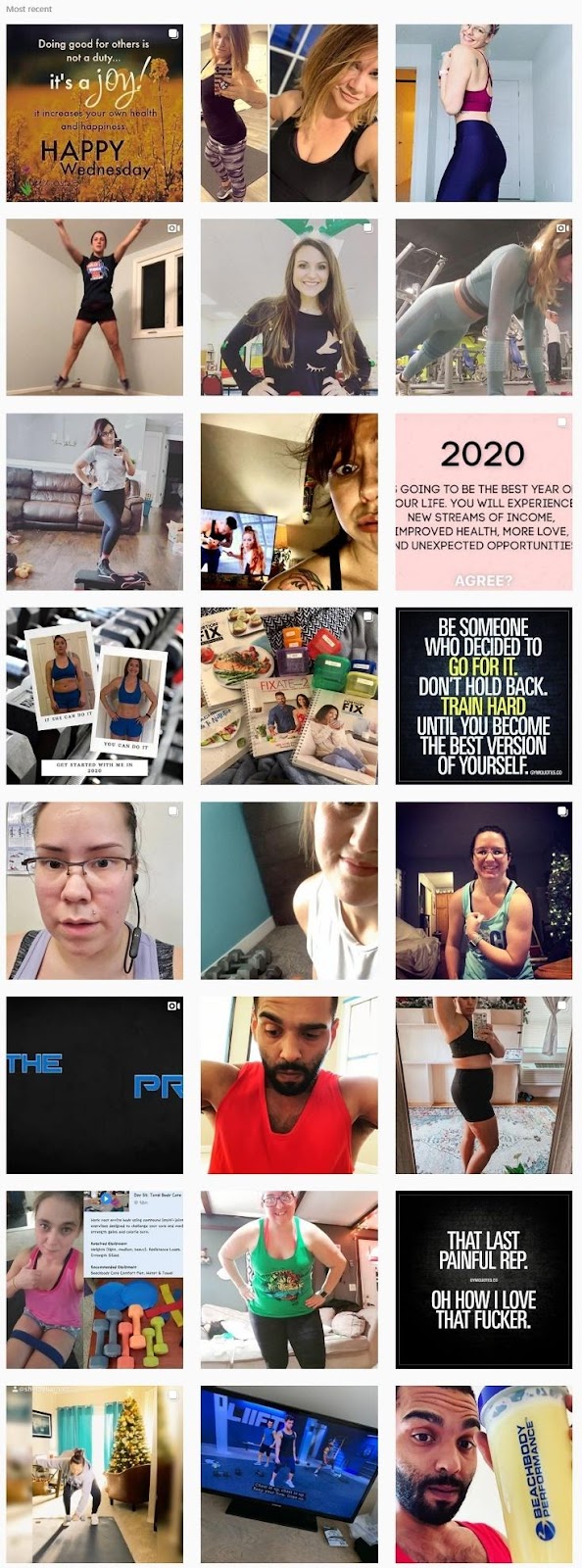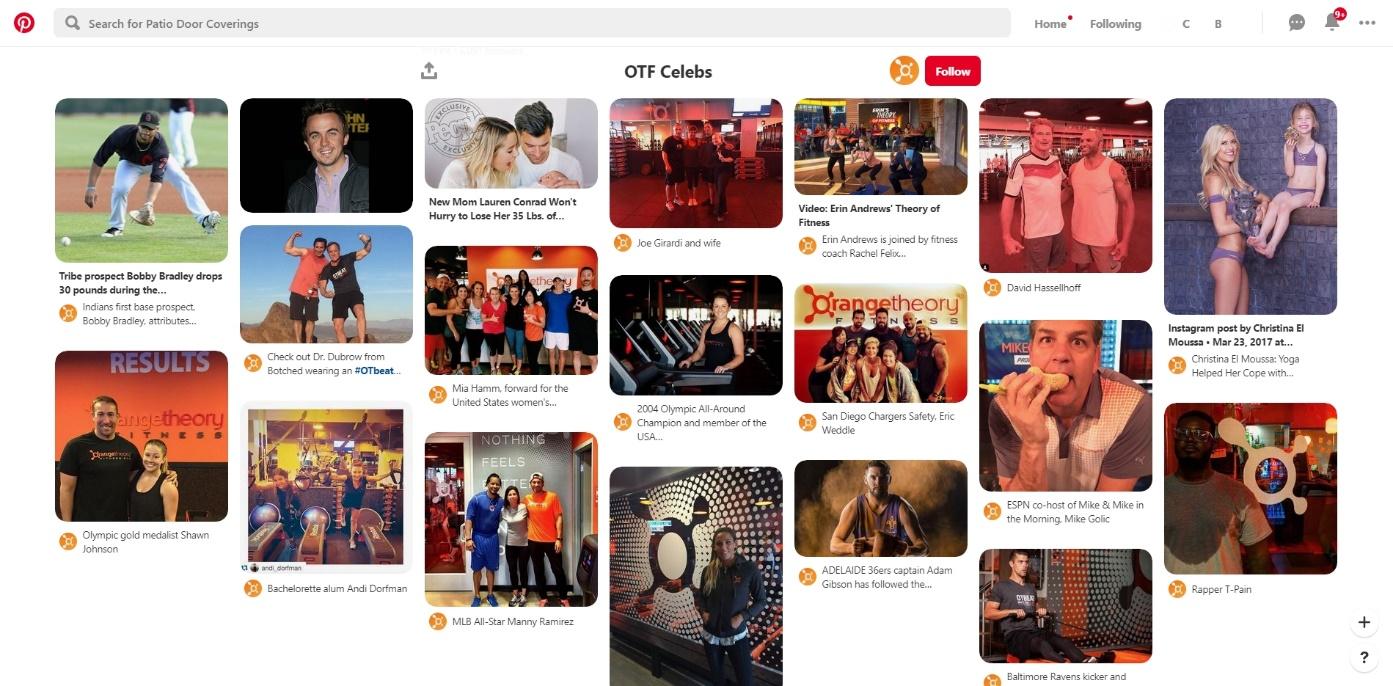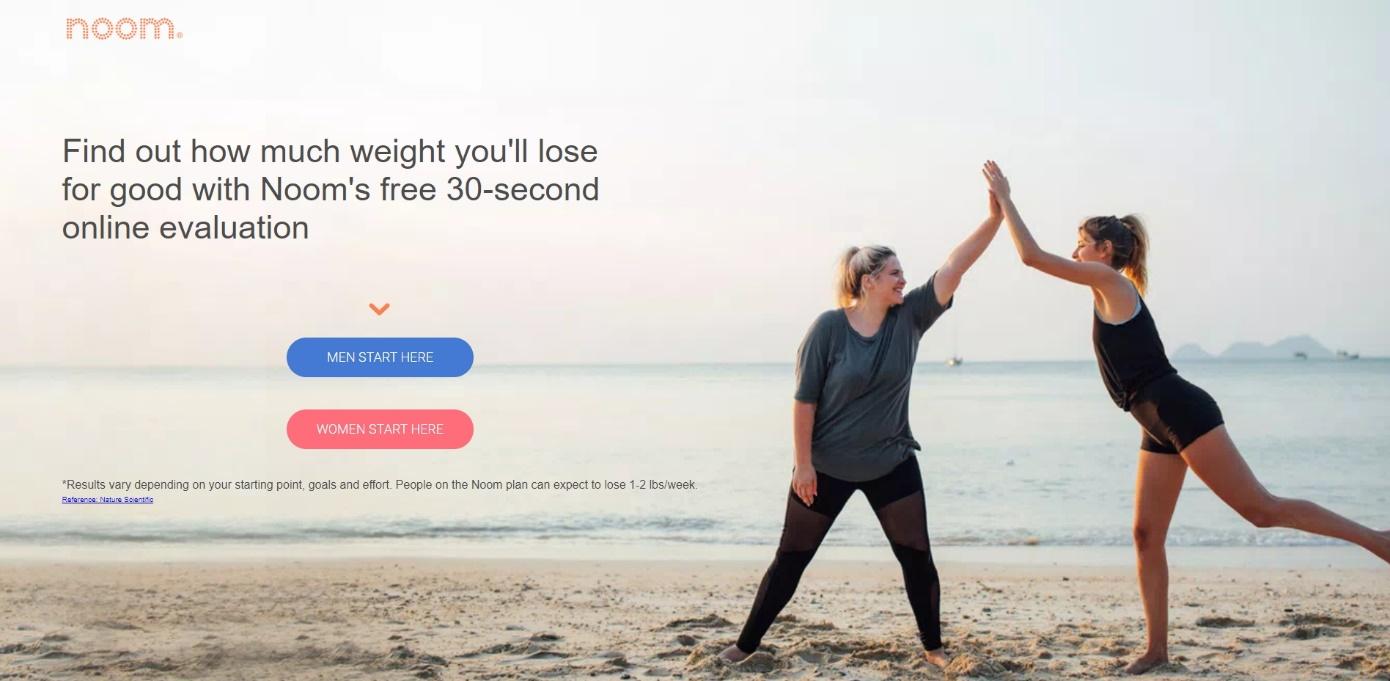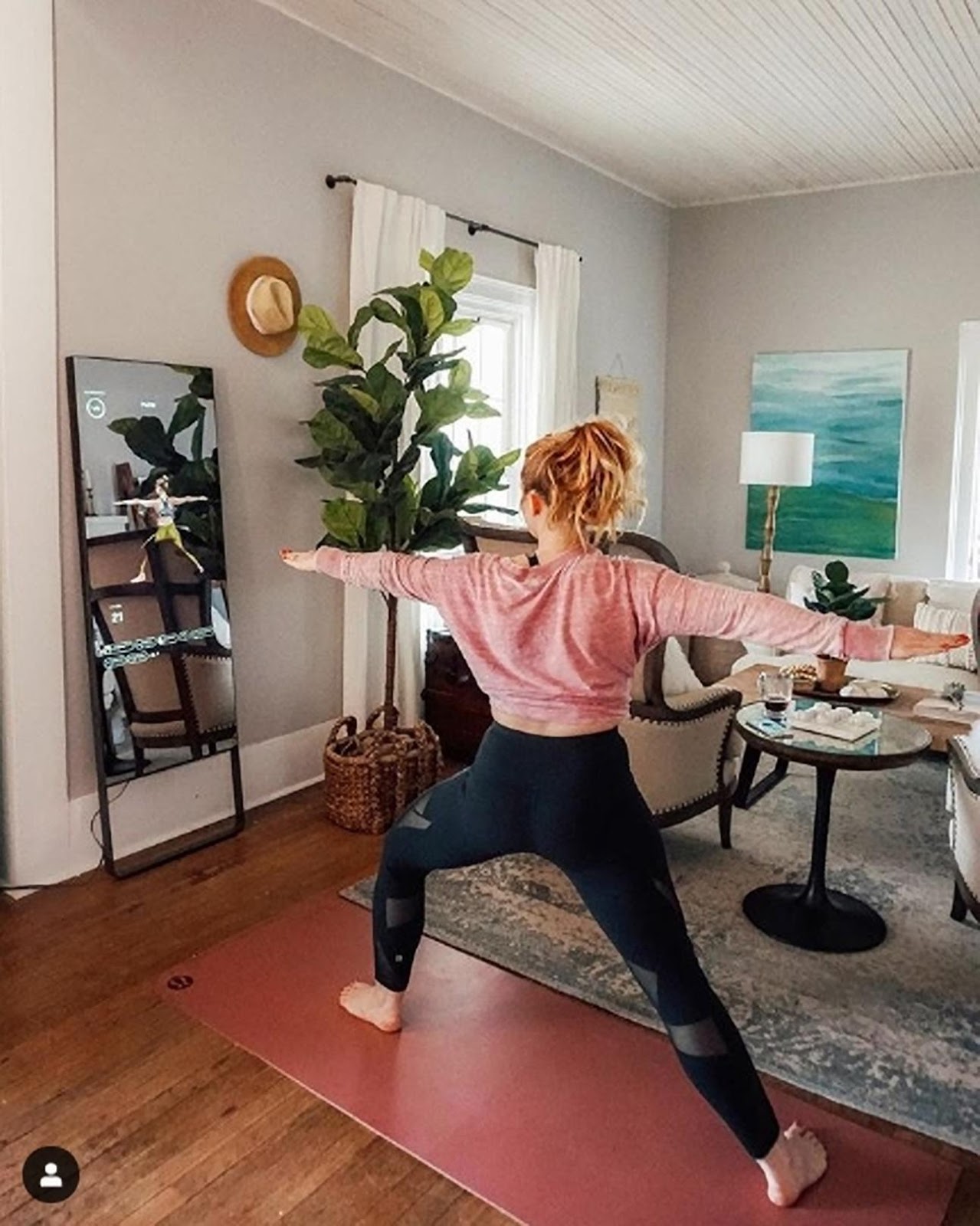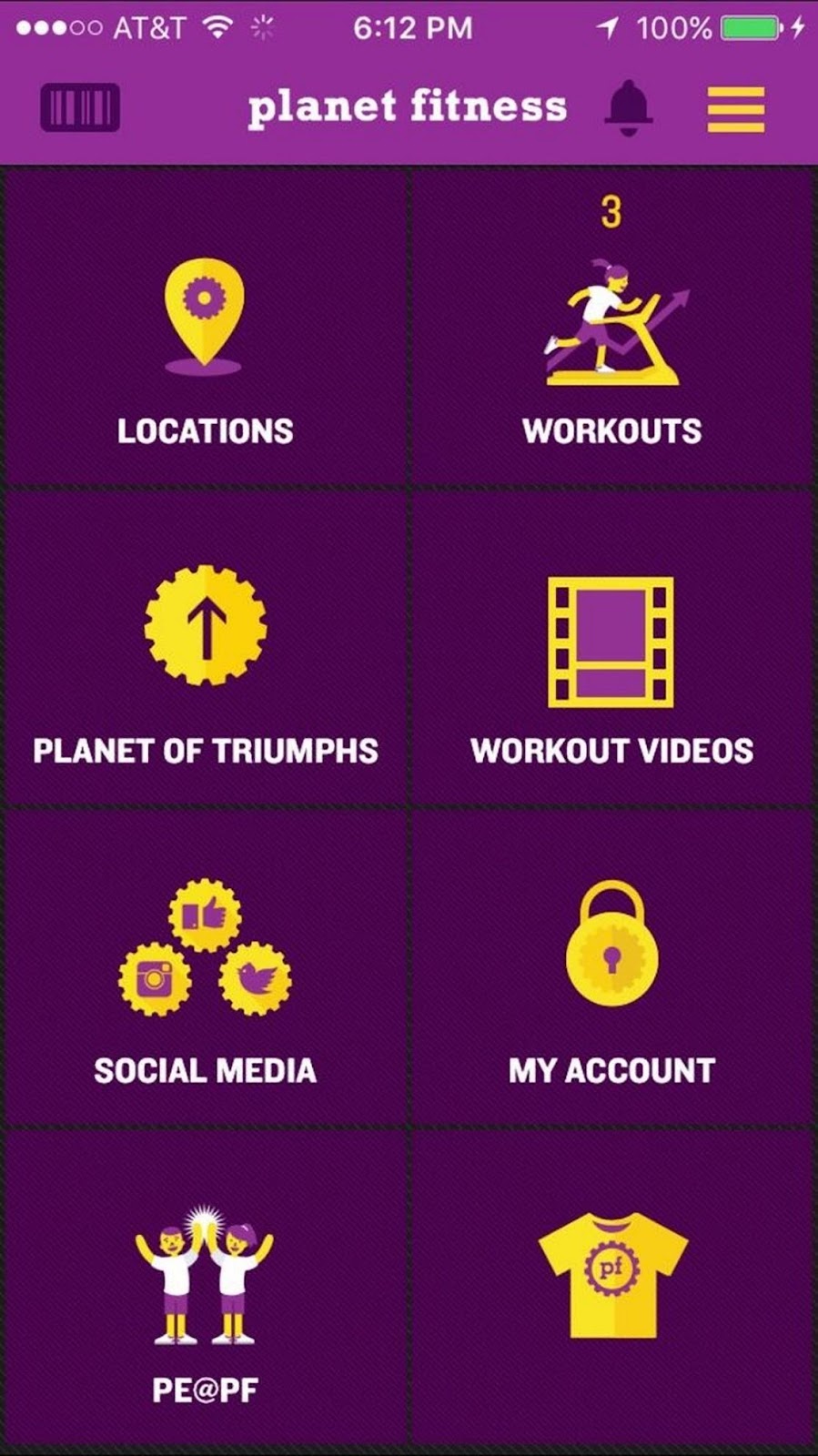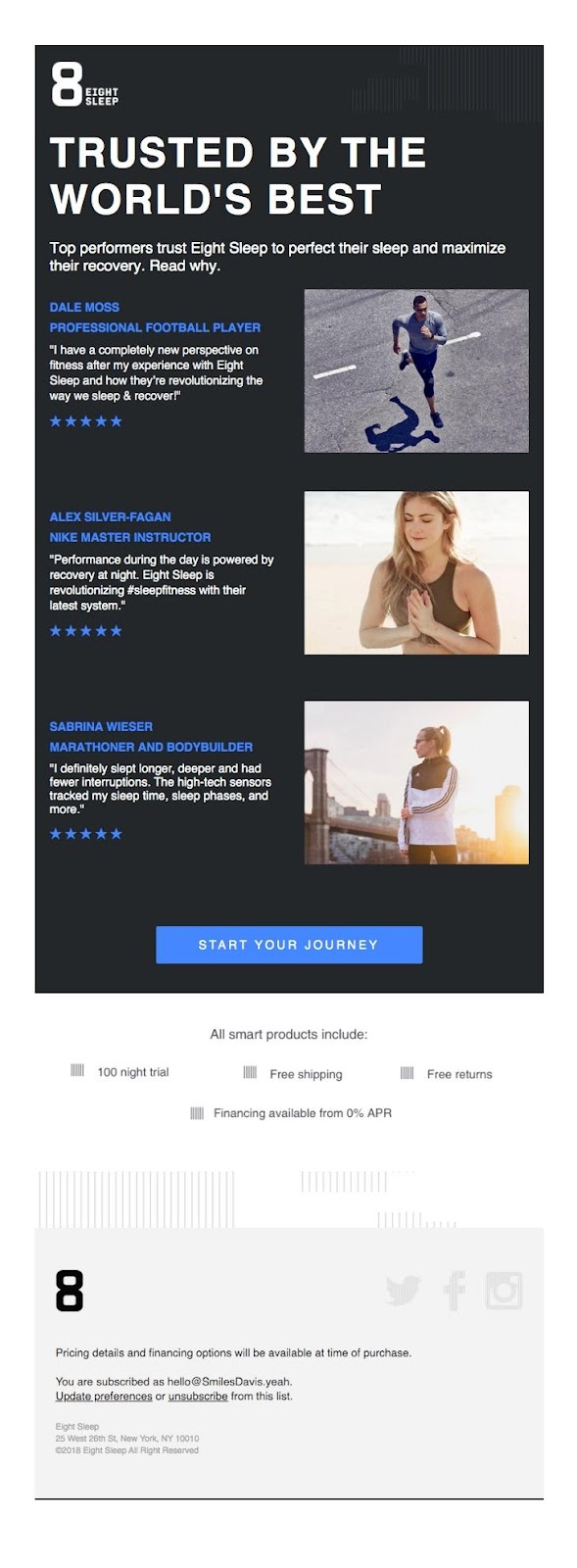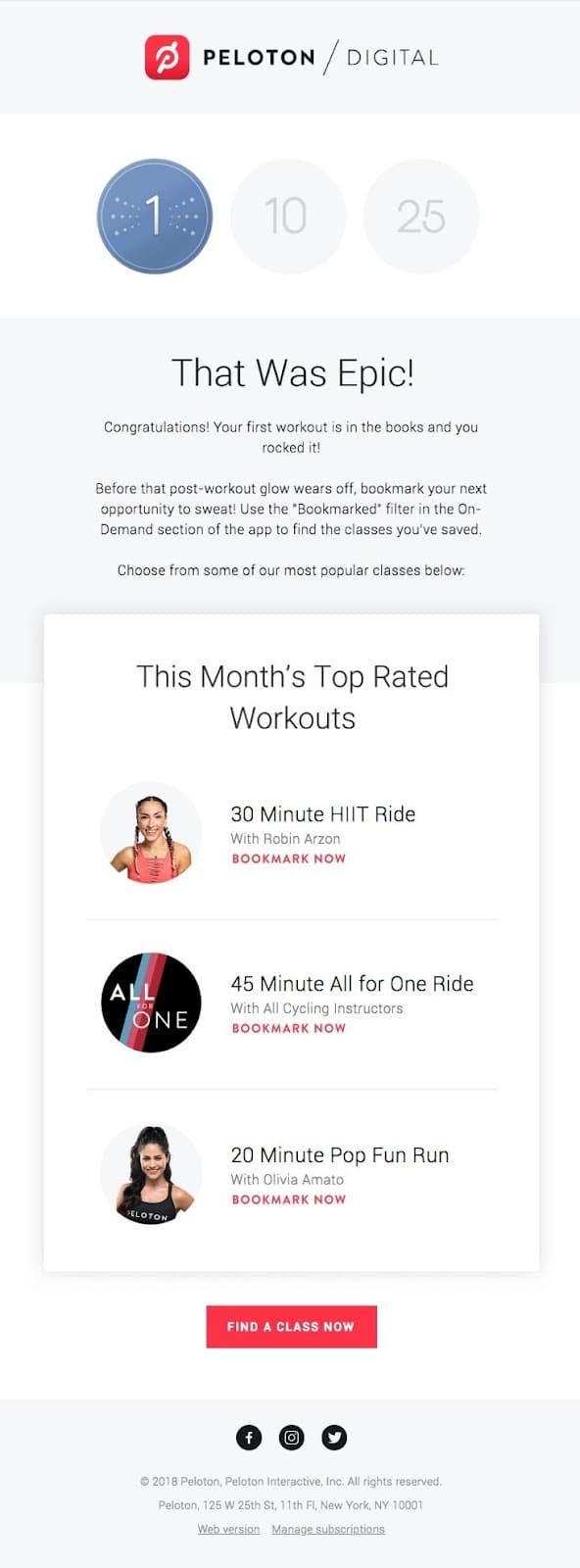5 Fitness marketing trends you don’t want to miss
The new year is a great time for those working in the fitness industry.
This time of year, everyone’s making changes to their overall health and wellness, so this is when fitness brands should be working their hardest. That said, if you haven’t started researching fitness marketing trends for the new year, it’s time to start.
In 2017, the U.S. fitness center and health club industry brought in more than 30 billion dollars.
Source: Statista
And the overall market value for health and wellness is continuing to rise – it’s expected to hit 179 billion dollars by 2020.
With the industry seeing financial growth, it’s also witnessing competitor growth. This means in order to succeed in the fitness industry, you must stay on top of the fitness marketing trends.
5 fitness marketing trends you need to know about
Just like with any other industry, 2020 is promising to be a year of innovation and growth. But in order to stay ahead of the game, make sure you’re caught up on all the fitness marketing trends.
Not quite sure where to start? Don’t worry. We’ll share five fitness marketing trends to incorporate into your 2020 marketing strategy.
1. User-generated content helps build trust and draw in new leads
User-generated content is an important part of any digital marketing strategy. But in the fitness industry, it’s even more so.
Nearly 84% of consumers say they trust online reviews more than a personal recommendation from friends and loved ones. This makes user-generated content more critical than ever to include.
User-generated content comes indifferent forms, including:
-
Reviews
-
Testimonials
-
Social shares
For example, when you pop over to Instagram and use the search feature to browse the latest updates with your favorite brand, you often come across content that’s tagged and shared by fellow customers.
Here’s an example of content shared by those who use Beachbody.
Source: Instagram
Each photo is a unique piece of user-generated content.
This is not only free content that can be used by the fitness brand, but it’s also great for convincing people who aren’t quite sure if Beachbody is right for them.
Here’s the thing: Beachbody used to be big thanks to their infomercials. Now, their success is primarily due to the use of user-generated content like the above.
You want to show unfiltered proof that your fitness brand is successful. One of the best ways to build trust between your brand and new leads is through the use of user-generated content.
2. Influencer marketing is growing – fast
Influencer marketing has become a massive part of many social media marketing strategies, and it’s showing no signs of slowing down. This is especially true given the fact that social media is now a favorite channel across all brands and industries.
In fact, Emma's client Orangetheory Fitness uses influencer marketing to their advantage regularly. They even have an entire Pinterest board dedicated to their celebrity clientele.
Source: Pinterest
Having these celebrity endorsements can make all the difference when marketing your fitness brand. Of course, celebrity endorsements aren’t the only way to market on social.
You can include influencer marketing in many ways:
-
Asking a trusted friend to be an influencer
-
Reaching out to industry professionals or macro-influencers (those with over 10,000 followers)
-
Reaching out to micro-influencers (those with under 10,000 followers)
3. Personalized solutions in fitness and wellness is important
Personalization is a fitness marketing trend that needs to be implemented into your business strategy.
In fitness, consumers are looking for a personalized solution to a very intimate pain point. So any brand toting a one-size-fits-all approach is going to find that they’re not getting the traction they were hoping for.
Instead, fitness brands need to focus on the individual.
One brand currently promoting personalized solutions is Noom. They offer newcomers a quick, 30-second online evaluation that designs a health and wellness approach to suit the individual’s needs.
Source: Noom
4. Visual and video marketing is worth investing in
Another trend that’s currently skyrocketing is visual and video marketing.
And fitness is an industry best promoted through visual content – especially when it comes to instructional material.
It’s scientifically proven that the human brain processes images nearly 60,000 times faster than text. That’s because nearly 90% of information transmitted to the brain is visual.
That’s why new fitness technologies are focusing on providing users with more visual content.
An excellent example of this technology is the Mirror.
Source: Instagram
Mirror – as its name implies – shows customers a visual of themselves as they work out to ensure their form is correct. It’s been an overwhelming success, and many happy customers have created user-generated content as a result.
Use visuals and videos in your marketing material. Give potential leads a reason to keep following your brand.
5. Use an omnichannel approach in your fitness marketing
Finally, one of the biggest fitness marketing trends worth noting is the omnichannel approach. This strategy uses several different marketing channels to help create a unified user experience.
Planet Fitness’ successful omnichannel approach is thanks to its mobile app. Their app helps their members track fitness goals, stores their membership pass, and helps them find local facilities. What’s essential to note here is that their end goal – no matter which channel their customer chooses to use – is to create an excellent user experience.
Source: Yelp
Implementing these fitness marketing trends into your strategy
Now that we’ve reviewed some of the top fitness marketing trends for 2020, it’s time to put them into your email marketing strategy.
Adding user-generated content and influencer marketing content
Adding user-generated content or influencer marketing content to your email marketing isn’t nearly as tricky as it seems. It can easily be added to a variety of different emails, like:
-
Product launches
-
Big sales
-
Product recommendations
In the following example from Eight Sleep, they chose to share consumer reviews with their email subscribers to prove why they’re a trustworthy brand.
Source: Really Good Emails
Adding personalization to your marketing
When it comes to personalization in email marketing, we’re long past adding a subscriber’s name to an email subject line. Now, personalization goes so much deeper.
Instead of traditional personalization methods, email marketers have to go a step further and send triggered emails to specific individuals once they’ve hit certain milestones.
Peloton sent out a congratulatory email to those who took the first step in their new wellness journey. They then go a step further and recommend options for the next workout.
Source: Really Good Emails
Adding videos and images to your marketing emails
Adding images and videos to your marketing materials will go a long way in helping your readers stay engaged with your email content.
Check out how Withings included several images in their email, all showcasing different features of their latest products.
Source: Really Good Emails
Including email marketing in your omnichannel approach
Finally, when using an omnichannel approach, make sure to include email marketing. Why? Because it’s not only the best channel for return on investment (ROI) but it’s also the preferred method of communication between customers and their favorite brands.
Strava is a mobile app and a social fitness network. Instead of relying solely on their mobile app as the sole channel through which they engage with customers, the brand has taken to email to provide important personalized monthly updates to users.
Source: Really Good Emails
Wrap up
When it comes to new fitness marketing trends for 2020, we suggest you consider several different trends. When designing your digital and email marketing strategies this year, keep in mind the following:
-
User-generated content
-
Influencer marketing
-
Personalized solutions
-
Visual and video marketing
-
An omnichannel approach
From large franchises to small, see why over 200 fitness brands worldwide trust Emma. Request your demo today.
MOST RECENT ARTICLES
Want to engage your audience and grow your brand? Try Emma's robust easy-to-use product today.


